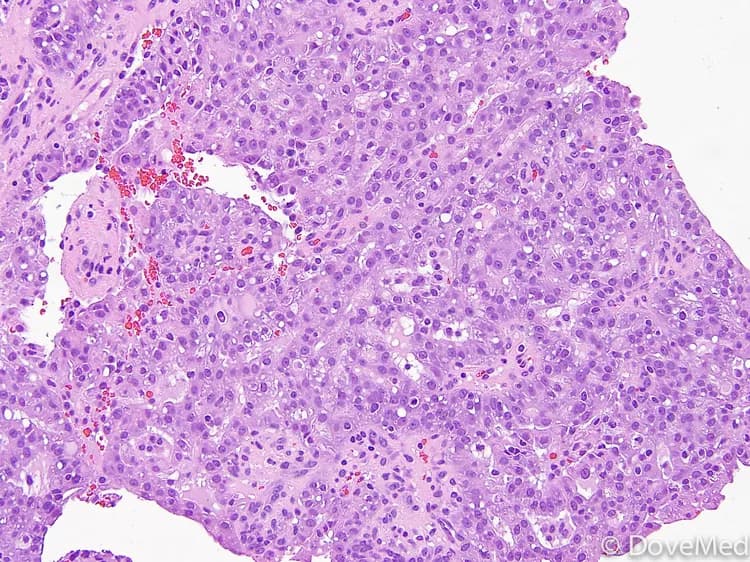
Small Discovery Holds Big Promise For Cancer Nanotechnology
When a team of researchers at the University of Cincinnati discovered a new nanostructure that showed significantly higher properties for use in technology that may allow doctors to see and destroy cancerous cells, they knew they were on to something exciting.
But the structure of the new SERS nanotag, as it's called, was so novel that the team -- led by Laura Sagle, an assistant professor of chemistry, with UC graduate students Debrina Jana, Jie He and Ian Bruzas -- was at a loss in understanding what generated the promising data or how to best optimize it.
Enter Zohre Gorunmez.
The fourth-year PhD student is credited with conducting nearly three years of complex and detailed calculations to better understand the new nanotag. She will present her findings at the American Physical Society's March conference, held March 14-18 in Baltimore.
"It was calculations that no one on campus had done before," explained Sagle, who serves as an advisor to Gorunmez. "Zohre, essentially by herself and without a lot of guidance and help, got these calculations up and running."
The discovery came in 2013 as part of the Sagle Lab research group's work in developing new methods to study and examine single molecules using a technique called surface-enhanced Raman spectroscopy, or SERS.
The technique targets molecules using lasers, which results in a scattering of light at different wavelengths along a spectrum. Because the molecules produce weak signals, gold or silver nanoparticles are used to amplify them, which is measured by a spectrometer for analysis.
The process is highly sensitive and fraught with challenges, including difficulties with reproducibility, signal stability and a lack of quantitative information.
The team looked to previous research, which showed greater enhancement from molecules residing within a one nanometer gap between a structure with a smooth metallic core and shell. But this one nanometer gap -- 100,000 times smaller than the width of a human hair -- is often difficult and expensive to produce, resulting in a lack of widespread use.
The team also took note of other popular research using gold nanostars, a starfruit-shaped particle that has allowed for greater enhancement, but is highly variable due to the difficult of controlling the number and size of the spiky tips.
Inspired, the team decided to combine the two concepts and create a structure comprised of a smooth inner metallic core surrounded by a spiky metallic outer shell with a three nanometer spacing -- an approach never before created, Sagle said.
The newly created nanotag produced 10 times greater signal enhancement compared to smooth-shell core structures, making it possible to detect minute amounts of organic molecules, such as DNA, for particular diseases, she said.
Not only that, the spiky structures are more efficient at generating heat, useful in destroying cancer cells, and offer an increased surface area that can accommodate more drugs in order to deliver a greater targeted blast to diseased cells, said Sagle.
"This allows you to target, image and release drugs all with one device," she explained.
While the discovery itself proved novel, Sagle knew that the team's promising nanotag needed to be further analyzed, understood and modeled before it could be used in biological applications. That's where Gorunmez came in.
Under the guidance of Thomas Beck, a professor of chemistry, Gorunmez learned new code and programming to calculate the complicated data. Her contributions proved invaluable, said Sagle, earning her a spot as co-first-author on the paper detailing the discovery.
"With Zohre's calculations, it was a much better paper showing we made something new, it showed better properties and we understand to some degree why," she said."
Gorunmez said that while the work proved challenging, the promise of what the data holds for use in biohealth applications fueled her drive to persevere.
"It's novel. I'm sure it's going to help scientists in medical research to use those structures to get what they need. Knowing this gets me excited," she said.
The above post is reprinted from materials provided by University of Cincinnati. The original item was written by Rachel Richardson. Note: Materials may be edited for content and length.
Disclaimer: DoveMed is not responsible for the adapted accuracy of news releases posted to DoveMed by contributing universities and institutions.
Related Articles
Test Your Knowledge
Asked by users
Related Centers
Related Specialties
Related Physicians
Related Procedures
Related Resources
Join DoveHubs
and connect with fellow professionals

0 Comments
Please log in to post a comment.